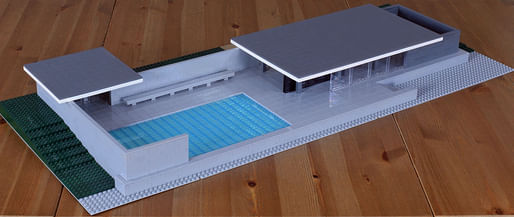An investigation into an early design of the Barcelona Pavilion
Really, the differences between the plan and the final construction are not great. Then again, I make this tentative conclusion, that our salvation depends on attention to small things, to what lies obvious before us, once seen clearly, felt within, once absorbed. Mies said similar.Gary Garvin, a name familiar to many Archinectors, delves into the lesser-known early design phase (Plan I) of Mies van der Rohe’s Barcelona Pavilion. This study highlights the architectural and conceptual distinctions between the initial plan and the final structure. Garvin’s detailed analysis provides insights into Mies’s design philosophy and the modernist principles that influenced the Pavilion’s evolution.Garvin begins by outlining the key differences between Plan I and the completed Pavilion. He notes how the initial design featured more pronounced structural elements, which were later refined to create the iconic open and fluid spaces of the final version. Garvin emphasizes Mies’s intent to balance form and function, highlighting how these early designs reflect the architect’s experimentation with spatial concepts.The investigation delves into the philosophical underpinnings of Mies’s work, discussing his commitment to the principles of modernism, such as minimalism, the use ...


Really, the differences between the plan and the final construction are not great. Then again, I make this tentative conclusion, that our salvation depends on attention to small things, to what lies obvious before us, once seen clearly, felt within, once absorbed. Mies said similar.
Gary Garvin, a name familiar to many Archinectors, delves into the lesser-known early design phase (Plan I) of Mies van der Rohe’s Barcelona Pavilion. This study highlights the architectural and conceptual distinctions between the initial plan and the final structure. Garvin’s detailed analysis provides insights into Mies’s design philosophy and the modernist principles that influenced the Pavilion’s evolution.
Garvin begins by outlining the key differences between Plan I and the completed Pavilion. He notes how the initial design featured more pronounced structural elements, which were later refined to create the iconic open and fluid spaces of the final version. Garvin emphasizes Mies’s intent to balance form and function, highlighting how these early designs reflect the architect’s experimentation with spatial concepts.
The investigation delves into the philosophical underpinnings of Mies’s work, discussing his commitment to the principles of modernism, such as minimalism, the use ...


